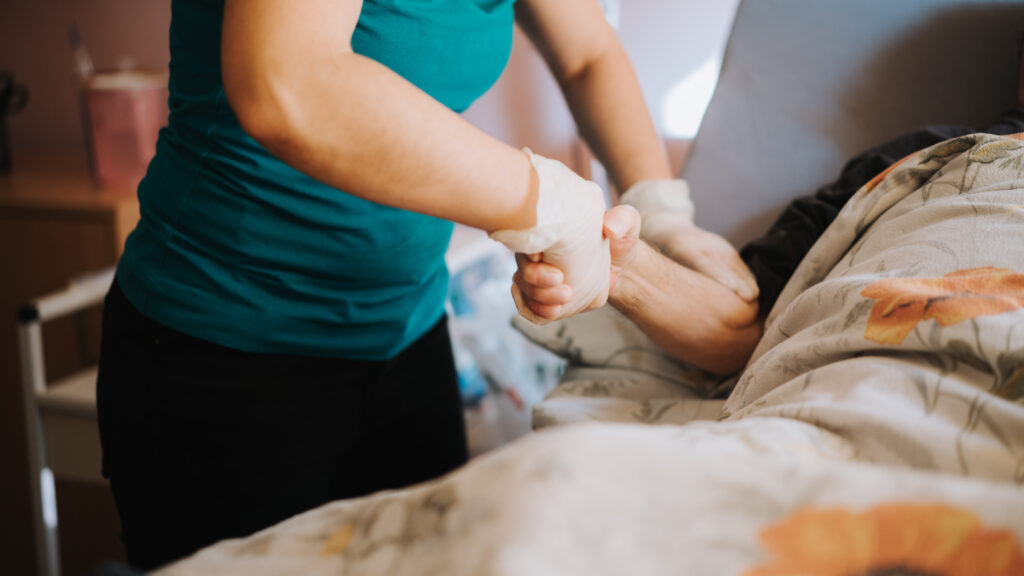Health
Palliative care is found to be equally useful, both virtually and in person

cHICAGO – Providing comfort to patients with advanced cancer can be almost as good as in-person, according to a new study study presented Sunday at the annual meeting of the American Society of Clinical Oncology in Chicago.
That’s welcome news for palliative care experts, who in many cases have preferred the convenience and effectiveness of telehealth sessions for both themselves and their patients since the Covid-19 pandemic forced virtual visits.
“I can sit in my office or at home and do patient after patient. It does not increase the number of health care professionals providing palliative care, but it does increase efficiency,” said Thomas Smith, a medical oncologist and palliative care specialist at Johns Hopkins Sidney Kimmel Comprehensive Cancer Center, who did not participate in the study. “These are very current studies. I’m glad we have them. There are simply not enough palliative care professionals to provide the care that is needed.”
Most patients with an advanced cancer diagnosis do not receive palliative care, which is sometimes combined with hospice or end-of-life care. Palliative care physicians provide support to patients and their families, seeking to ease their journey through a serious illness such as cancer at any time. That could help patients manage pain or anxiety, better understand their illness, or even discuss existential questions.
“This is focused on quality of life,” said Joseph Greer, a psychologist at Mass General Hospital Cancer Center and lead author of the study. “Symptom Management, Emotional and Functional Well-Being, and Spiritual Well-Being.”
It may not directly treat the patient’s cancer, but comfort is nothing to wave your hand at, Greer said. He and his colleague, oncologist Jennifer Temel of the MGH Cancer Center, showed more than a decade ago that when doctors integrated palliative care early, patients actually lived longer compared to patients who did not receive early palliative care.
“The people who received palliative care and symptom control lived 2.7 months longer. That has been seen in several other studies,” Smith said. In other studies, Smith says, palliative care has been shown to increase patient survival by about 10% after a year or two. “Most oncologists would kill for a drug that would give them that improvement in survival.”
Moving palliative care sessions to telehealth could allow more patients to receive such care – assuming there isn’t a major loss if they don’t attend in person. To test this, Greer and Temel started this study seven years ago and recruited 1,250 patients with advanced lung cancer. Half of them were randomly assigned to receive palliative care virtually, while the other half were asked to attend the cancer center monthly.
At the end of the study, there was no statistically significant difference between the groups in terms of their depression and anxiety symptoms, use of coping skills, or their understanding of their treatments and cancer prognosis. Some patients also invited their caregivers to participate in the study, Greer said, and caregivers in both groups also reported similar results in terms of satisfaction with the program and emotional symptoms.
These results should provide a rationale for continuing or even expanding telehealth palliative care programs, especially when considering the more intangible benefits of virtual visits, says Elizabeth Loggers, an oncologist and palliative care specialist at Fred Hutchinson Cancer Center .
“There are a number of benefits when palliative care is delivered via telehealth. They can be at home, in their pajamas, and their caregivers or someone else across the country can be at that appointment to act as support,” she said. “It also allows them to participate when they feel their worst. The difficult thing about personal contact is that when you feel the worst, you are least likely to drive to the center to be seen.”
Virtual visits can also increase the efficiency of the health care system, Loggers added, because doctors may not have to wait for patients to enter an exam room, check in or simply be late for their appointment. These benefits could simply help ensure that a greater proportion of patients receive palliative care when so few currently have access, Loggers said.
Palliative care experts are also exploring other ways to ensure more patients are seen. In another abstract presented at ASCO in Chicago and published in JAMA by Temel from MGH, she showed that the frequency of visits to palliative care can be reduced for patients with fewer physical or emotional symptoms – also without any loss of effectiveness of palliative care.
Hopefully, she said, these studies will help more centers find ways to provide palliative care to more of their patients. “The resources and strategies we have for providing palliative care are expanding,” she said. “We know this is the best way to care for patients, and we want to ensure more patients have access to this vital service.”













